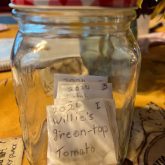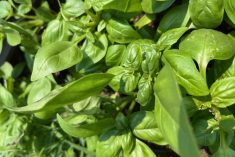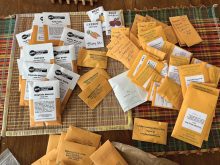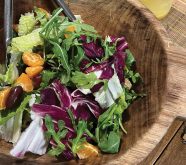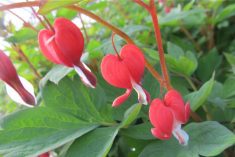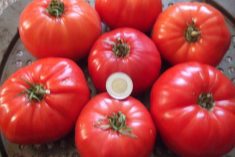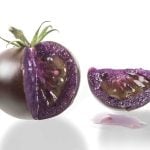Thank you to my Grainews friends and readers for coming by again. What would I do without you? We’ve all heard the expression: you’re like the salt of the earth — someone who stands by and pitches in to help through thick and thin. I think of plain old ordinary salt as something that helps people and pitches in when sneezing, sore throats, runny noses, colds and the flu are rampant. One way to fight back is with saline water.
Emails are part of the territory when you’re a writer. One that came my way in early December 2023 really takes the cake. It’s a whopper with well over 1,000 words. I’ll share some of what the writer says further along.
Read Also

Gentle treatments for pain in the neck
Heading toward year-end, people unknowingly tense up against the cold and busyness, causing neck pain that can often be treated with appropriate support and gentle mobility, athletic therapist Kathlyn Hossack says.
There’s a tomato called Park’s Whopper. Reminds me how much Grainews readers love their homegrown slicing tomatoes, especially the whoppers. If words could sing, you’d hear me singing something like this:
O I’m lovin’ my tomatoes in the good ol’ summer time,
In the garden, in the row, my tomatoes there they grow.
I like carrots and potatoes, but how I love my tomatoes,
By the basil, by the parsley, my tomatoes what a show!
Many gardeners truly choose to seed some annuals such as peppers early on. They can be notoriously slow to germinate, so give ’em a soak for a few hours first in eight ounces — that is, one cup — of room temperature water with one teaspoon of hydrogen peroxide stirred in, then drain off liquid and sow with bottom heat. I call it good timing when done in conjunction with the moon. Some best upcoming seeding dates for peppers, including tomatoes and annual flowers are as follows: January 18, 19, 22, 23, 24, 25; February 10, 11, 14, 15, 16, 19, 20, 26, 27, 28; March 12, 13, 14, 17, 18, 19, 24, 25, 26, 27, 28, 2024.
The red maple leaf with its white and red side bars is still flying high and handsome. My hat is ready to tip a breezy winter welcome so come aboard, good people ’cause my load of words and a welcome are headed your way.
Subject: Re: fruit trees/shrubs/vines
(Email edited to accommodate space.) Dec. 3, 2023 — Good day Ted — My full name is Jeannine Forseille from Humboldt, Sask. — the Muenster/Watson area. I was looking over a couple of your columns and kept most of them for several years already. We grew some Mortgage Lifter tomatoes last year — the bedding plants were hard to find. My husband kept seeds and plans to start them in early spring. We had a lovely flower garden just at the back of the house. I’d like to plant one or two purple sage there. We have hops in one area — very nice foliage, but we’d like to get grapes in there as we enjoy them fresh. My daughter has a fruit steamer and has made juice/jelly over the years (grapes from our old location). I was intrigued with your column regarding Bluebell grapes and we’d like to try them — I presume they’d be hardy in our area. Checked at Dutch Growers, Saskatoon and they don’t carry that variety. Do you have any idea about a good source to buy them from? Would you suggest a larger plant if available to speed up fruit production? And what type of fertilizer — the ground here is very hard. We can certainly add leaves, grass clippings, et cetera and would do so to help with moisture retention. We have only one gooseberry bush with some fruit on — not great — maybe some birds helped themselves — but we want to expand the production by planting some on the edge of the garden — to catch south and west sun — we don’t know what variety of gooseberry. They are a whitish fruit, turning rosy colour as they ripen — grandkids loved them. We want to plant five to six bushes either all one variety or two different types. Preferably something that gives a fair yield and is OK for size and not too tart. As I have looked at various types, they all have their good points and downside but thought we’d ask your advice on that as well and where to obtain. Haskaps are good, despite the mesh needing replacement — cedar waxwings got their fill as well. We never could figure out where their entry point was. We also need to do some pruning. We plan to replace the wire mesh in spring then we won’t need to share as many berries with the birds. The haskaps make a delicious jam which the grandkids loved. We have found that the sour cherries make delicious tarts and pies and when fully ripe are very good for fresh eating. Nanking cherries can go. We did attempt to transplant some suckers from our previous location but not sure of the success until spring. We need to purchase more trees regardless and want the largest, sweetest possible. I’m thinking something from the Romance series — or are there newer varieties that would be worthwhile trying? We need ideas on fertilizer for all of the above as well as for the garden. The rhubarb plant is alive, but not growing or producing as it should. While I’m bombarding you with questions, what is a good deterrent for birds who love the fruit of saskatoons, cherries, haskaps, raspberries and strawberries? Would old CDs on strings hung up throughout the bushes/trees/berry plants help?
Ted’s reply
Thank you, Jeannine, for writing. Plants mentioned in your email are available for purchase online from the following garden centres/nurseries:
- T&T Seeds, Headingley, Man.
- Veseys Seeds, Charlottetown, P.E.I.
- Corn Hill Nursery, Corn Hill, N.B.
Questions asked will be answered as I’m able via this column or by email.
Something new
The Viking (Aronia melanocarpa) chokeberry shrub is similar to a chokecherry tree but not the same. Both taste very astringent, but they are quite different. Chokecherries are species of a prunus, the genus for cherries, plums and peaches. Chokeberries are species of aronia.
Chokecherry flowers form on a spike, called a raceme. Aronia flowers are on a corymb, a cluster that grows into a bowl-like form. If you squash a berry of each separately, chokecherry has a single stone. By contrast, several seeds on the inside indicate it’s aronia.
Research confirms aronia berries as a superfood rated extremely high in antioxidants. The ornamental shrubs are disease-resistant and very easy to grow in almost any soil condition, and are available for purchase from Veseys as Viking aronia berry bush. It originated from Finland and is hardy in zone 3. Expect attractive white blossoms in springtime and reddish-orange leaves in autumn. Viking is self-fertile (needs no kissing cousin) and said to be favoured by commercial growers for its yield of large (1/2-inch) berries on eight-foot shrubs. The berries are uniform in size, flavourful and juicy when ripe.
From childhood days I recall picking wild chokecherries from trees growing here and there in the countryside. Fortunately, I still have a narrow strip of wild chokecherry trees growing along the northern edge of my garden, having experienced much-appreciated harvests over the years.

Salt and water
A saline (salt or salts) solution has been shown to reduce the duration of the common cold by two days and reduces transmission of germs within the entire household by one-third or more, when begun within 48 hours of symptoms appearing. Gargling and flushing nasal passages with saline solution can ease respiratory symptoms and reduce risk of further complications.
“It’s a very simple intervention that is universally available, cheap and easy to use,” one research doctor involved in an unrelated study was recently quoted as saying of the practice. “I think it can make a difference, especially when it comes to comfort.”
If making saline solution at home, start with a mild combo using a half teaspoon of natural unprocessed salt (or less) dissolved in eight ounces of warm water. A half teaspoon of baking soda may be added if desired. Gargle for one full minute, then spit it out. Do this three or four times a day for up to two weeks, easing off once symptoms start to diminish. Provide additional daily support by flushing of sinuses via nostrils using a neti pot filled with solution and also inhaling warm salt water vapours for 15 minutes under a towel with an opening for air.

Using saline solution as indicated clears out germs and pathogens, preventing them from gaining a strong foothold into lungs, lowering the viral load, easing breathing and speeding recovery while bringing relief to a runny nose, sneezing, sore throat and cold. You can buy a ready-made sterile saline solution if desired and a neti pot that provides a comfortable method using natural gravity. Other devices are also available for purchase. Check at pharmacies and health food stores.




